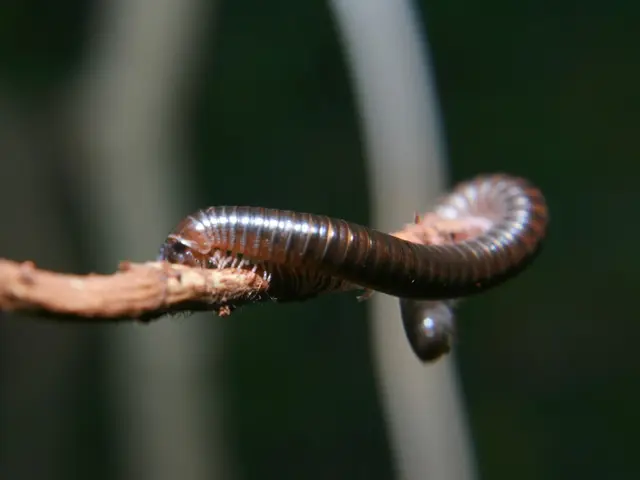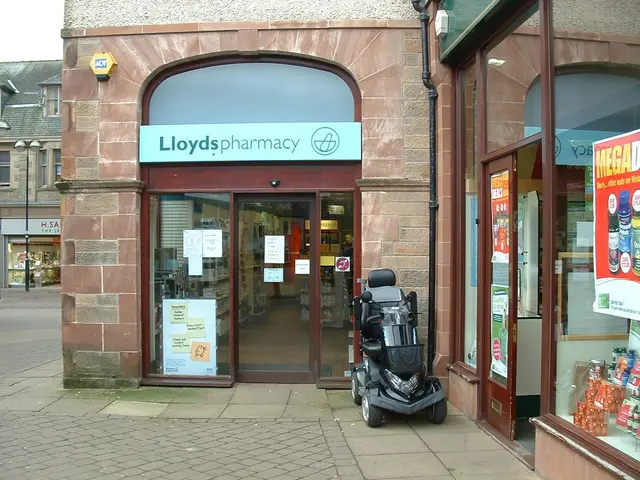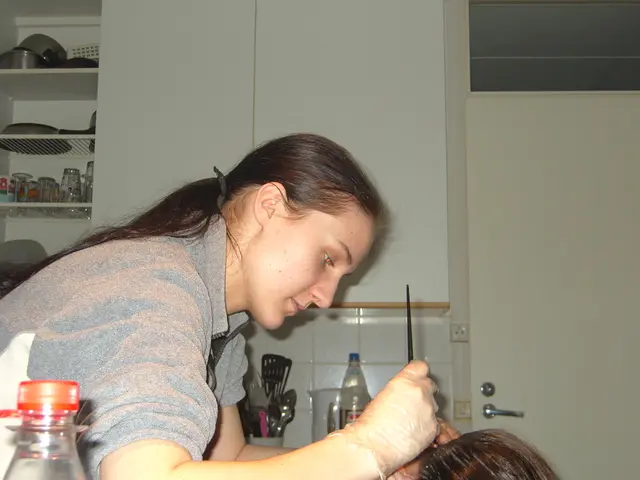Distinguishing Age Spots from Skin Cancer: Recognizing the Discrepancies
Laying it All Out: Age Spots, Skin Cancer, and Actinic Keratosis - What's the Difference?
As we age, our skin may display various marks, leaving us questioning if they're harmless or something more serious. In this article, we'll break it down for you - age spots, skin cancer, and actinic keratosis - what they look like, how they differ, and what to do if you've got 'em.
Age Spots vs. Skin Cancer - Know the Signs
Both age spots and skin cancer can appear similar, but they've got their fair differences. Here are the key characteristics of each:
Age Spots (A.K.A Solar Lentigines or Liver Spots)
Typically harmless and uneventful, age spots manifest as small, dark patches on the skin that are usually flat and smooth. They can appear anywhere from yellow, brown, or gray, with defined, clear borders. These darkened areas on the skin usually result from excessive melanin production due to UV radiation exposure. Often occurring from middle age onward, they're more common on lighter-skinned individuals but can pop up on any skin tone.
Skin Cancer
Skin cancer is a serious condition that can develop due to UV radiation exposure or genetic and environmental factors. Unlike age spots, skin cancer is harmful and can spread to other parts of the body if not treated promptly.
There are three main types of skin cancer:
- Basal Cell Carcinoma (BCC): Commonly appears as a small, shiny lump on the skin, often found on the nose, ears, lower lip, and hands.
- Squamous Cell Carcinoma (SCC): Usually appears as a firm, red nodule or flat sore with a scaly crust, commonly found on sun-exposed areas like the face, neck, and hands.
- Melanoma: The most dangerous type of skin cancer, melanomas display irregular moles with varying colors (black, blue, pink, or purple) and asymmetric shapes with irregular, blurred, or ragged edges.
Another distinct mark that might be mistaken for an age spot is actinic keratosis. This precancerous growth occurs due to UV radiation damage and, if left untreated, may develop into SCC.
Can Age Spots Turn Into Cancer?
Fret not, friends - age spots do not turn into skin cancer. However, actinic keratosis can potentially develop into SCC if it's not treated. Monitor new or changing marks on your skin, and consult with a healthcare professional if any potential signs of skin cancer or actinic keratosis happen to pop up. Catching skin cancer early increases the chances of successful treatment.
Symptoms: Age Spots vs. Skin Cancer - A Side-by-Side Comparison
Symptoms of Age Spots
- Flat and smooth
- Yellow, brown, or gray
- Well-defined borders
- Changes with season - more prominent in summer
- Located on sun-exposed areas - face, hands, arms, shoulders, etc.
Symptoms of Skin Cancer
- Signs of a cancerous growth include:
- Asymmetrical shape
- Irregular, blurred, or ragged edges
- Changing size, color, or shape
- Multiple colors on the same spot
- Pink, blue, purple, black, or brown coloring
- Raised, red patches
- Pale or yellow firm patches, similar to scars
- Itching, oozing, or bleeding persistently
- Crusty or scaly patches
- Raised edges that lower in the middle
When to Consult a Healthcare Professional
Consult a healthcare professional if you notice any unusual changes in your skin, such as new or changing marks that itch, crust over, scab, or bleed and don't heal within four weeks. Early detection of skin cancer boosts the chances of successful treatment.
Diagnosis and Treatment
A doctor or dermatologist performs a physical examination of the spot during a diagnosis. They assess the spot's appearance, texture, and location to determine whether it's an age spot, skin cancer, or actinic keratosis.
If unsure, they may perform a skin biopsy to test for other conditions like skin cancer or actinic keratosis. Treatment for age spots and skin cancer differs significantly, with age spots typically requiring no treatment, while skin cancer demands timely and appropriate intervention.
Stay informed, be vigilant, and keep those summer rays at bay! If you've been grappling with age spots or skin cancer concerns, we hope this guide has shed some light on what to look for and what to do next.
- Age spots, also known as solar lentigines or liver spots, typically appear as small, dark patches on the skin that are usually flat and smooth.
- Unlike age spots, skin cancer is a harmful condition that can spread to other parts of the body if not treated promptly.
- Basal Cell Carcinoma (BCC) commonly appears as a small, shiny lump on the skin, often found on the nose, ears, lower lip, and hands.
- Squamous Cell Carcinoma (SCC) usually appears as a firm, red nodule or flat sore with a scaly crust, commonly found on sun-exposed areas like the face, neck, and hands.
- Actinic keratosis is a precancerous growth that might be mistaken for an age spot, and if left untreated, may develop into SCC.
- Age spots do not turn into skin cancer, but actinic keratosis, if left untreated, may potentially develop into SCC.
- Symptoms of age spots are flat, smooth, and well-defined with yellow, brown, or gray colors, while symptoms of skin cancer include changes in size, color, or shape, as well as asymmetrical shapes with irregular, blurred, or ragged edges.
- Early detection of skin cancer boosts the chances of successful treatment, so it's essential to consult a healthcare professional if you notice any unusual changes in your skin.








